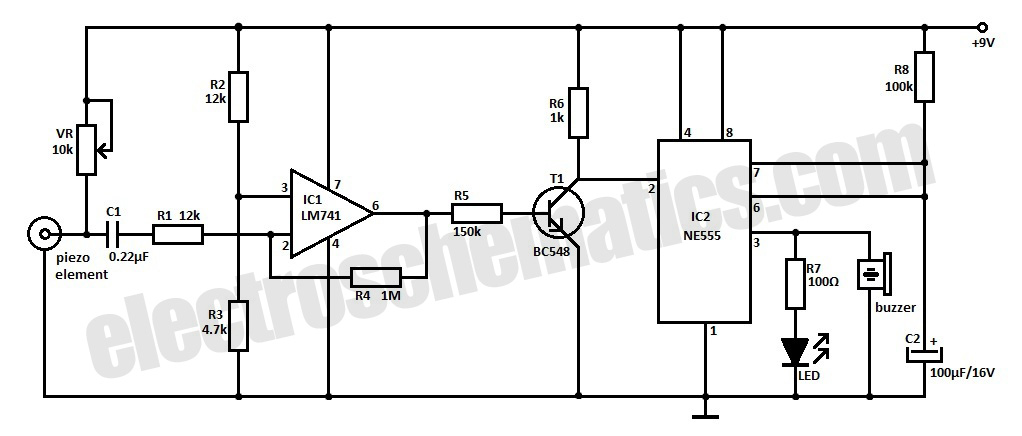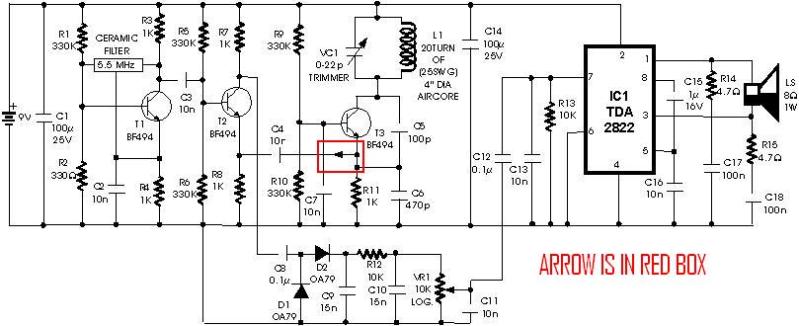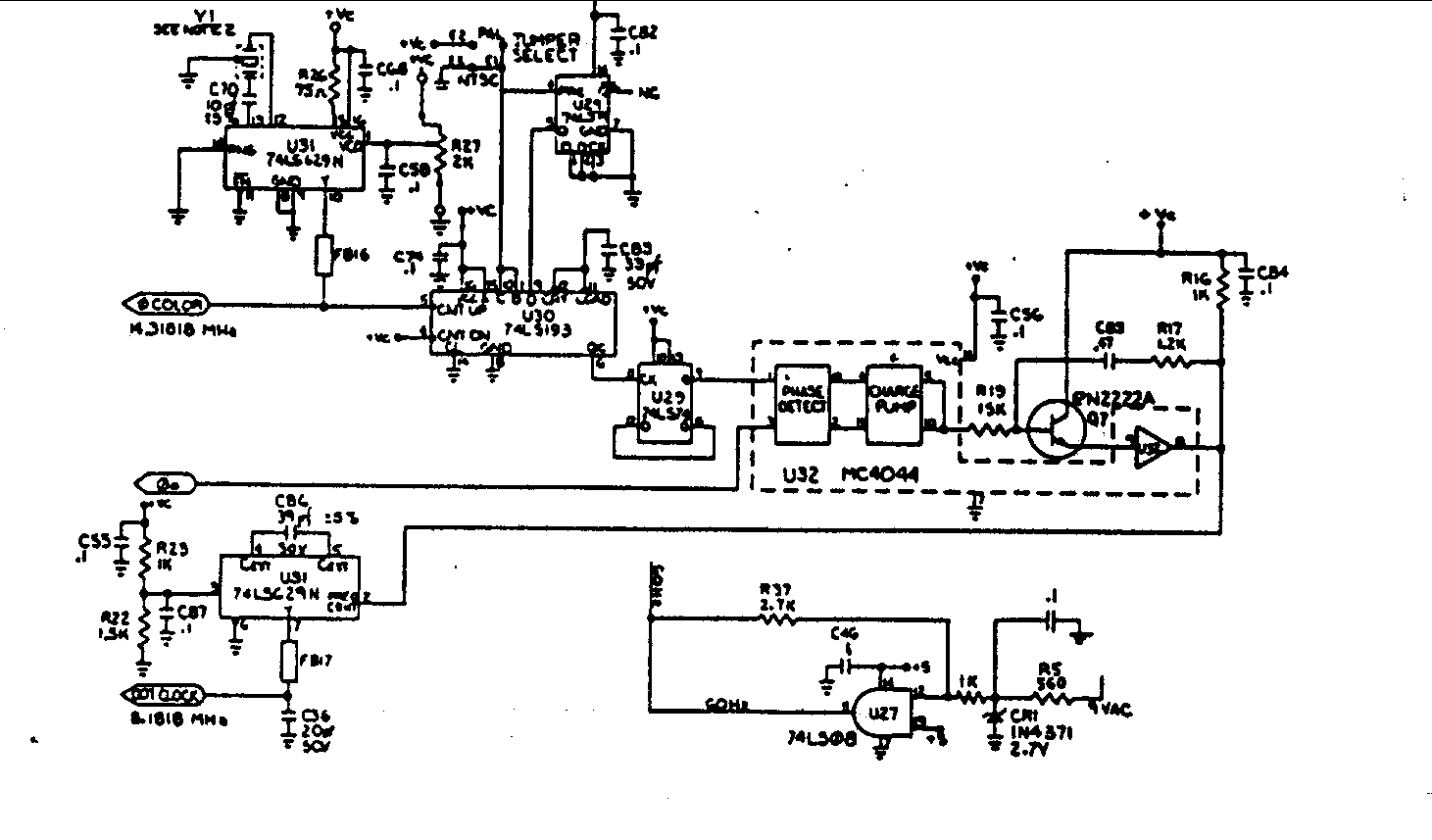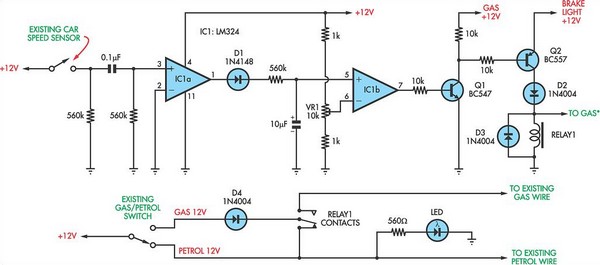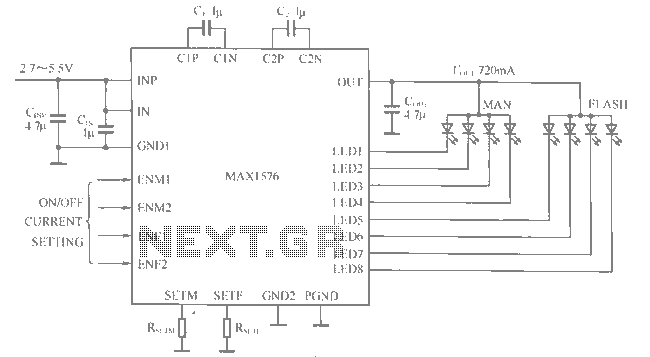
Variable speed electric motor bike circuit
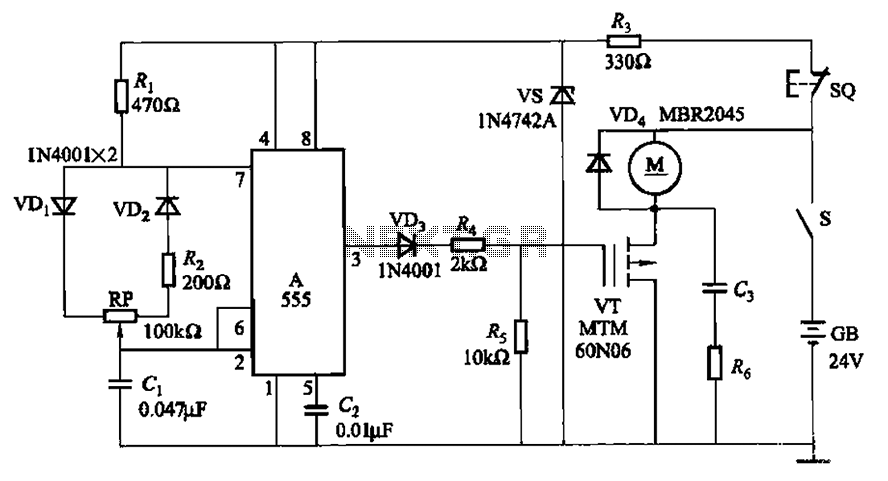
The adjustment potentiometer (RP) allows for modification of the duty cycle of a square wave generated by the 555 integrated circuit (IC) in New Zealand, enabling control of motor speed within a range of 0 to 100%.
The circuit utilizes a 555 timer IC configured in astable mode to produce a square wave output. The adjustment potentiometer (RP) is integrated into the timing circuit, influencing the charge and discharge times of the timing capacitor. By varying the resistance of the potentiometer, the duty cycle of the square wave can be adjusted, which directly affects the average voltage supplied to the motor.
In this configuration, the 555 timer operates with two resistors (R1 and R2) and a timing capacitor (C). The values of R1 and R2 are fixed, while RP is variable. The duty cycle (D) of the output waveform can be calculated using the formula:
D = (R2 / (R1 + 2 * R2)) * 100%
As RP is adjusted, the ratio of R2 to the total resistance (R1 + R2) changes, thereby altering the duty cycle. This change in duty cycle results in a corresponding change in the effective voltage applied to the motor, allowing for precise speed control. The motor can operate from a complete stop (0% speed) to full speed (100%) depending on the position of the potentiometer.
The circuit should include additional components such as a diode for back EMF protection and possibly a transistor or MOSFET to handle higher current loads required by the motor. Proper decoupling capacitors should also be placed near the power supply pins of the 555 IC to ensure stable operation. This design provides a simple yet effective method for controlling motor speed using a widely available 555 timer IC.Adjustment potentiometer RP, can change by the 555 IC A New Zealand into a square wave duty cycle of the square wave, the motor speed to achieve the purpose of the speed range of O-l00%.
The circuit utilizes a 555 timer IC configured in astable mode to produce a square wave output. The adjustment potentiometer (RP) is integrated into the timing circuit, influencing the charge and discharge times of the timing capacitor. By varying the resistance of the potentiometer, the duty cycle of the square wave can be adjusted, which directly affects the average voltage supplied to the motor.
In this configuration, the 555 timer operates with two resistors (R1 and R2) and a timing capacitor (C). The values of R1 and R2 are fixed, while RP is variable. The duty cycle (D) of the output waveform can be calculated using the formula:
D = (R2 / (R1 + 2 * R2)) * 100%
As RP is adjusted, the ratio of R2 to the total resistance (R1 + R2) changes, thereby altering the duty cycle. This change in duty cycle results in a corresponding change in the effective voltage applied to the motor, allowing for precise speed control. The motor can operate from a complete stop (0% speed) to full speed (100%) depending on the position of the potentiometer.
The circuit should include additional components such as a diode for back EMF protection and possibly a transistor or MOSFET to handle higher current loads required by the motor. Proper decoupling capacitors should also be placed near the power supply pins of the 555 IC to ensure stable operation. This design provides a simple yet effective method for controlling motor speed using a widely available 555 timer IC.Adjustment potentiometer RP, can change by the 555 IC A New Zealand into a square wave duty cycle of the square wave, the motor speed to achieve the purpose of the speed range of O-l00%.
Warning: include(partials/cookie-banner.php): Failed to open stream: Permission denied in /var/www/html/nextgr/view-circuit.php on line 713
Warning: include(): Failed opening 'partials/cookie-banner.php' for inclusion (include_path='.:/usr/share/php') in /var/www/html/nextgr/view-circuit.php on line 713
